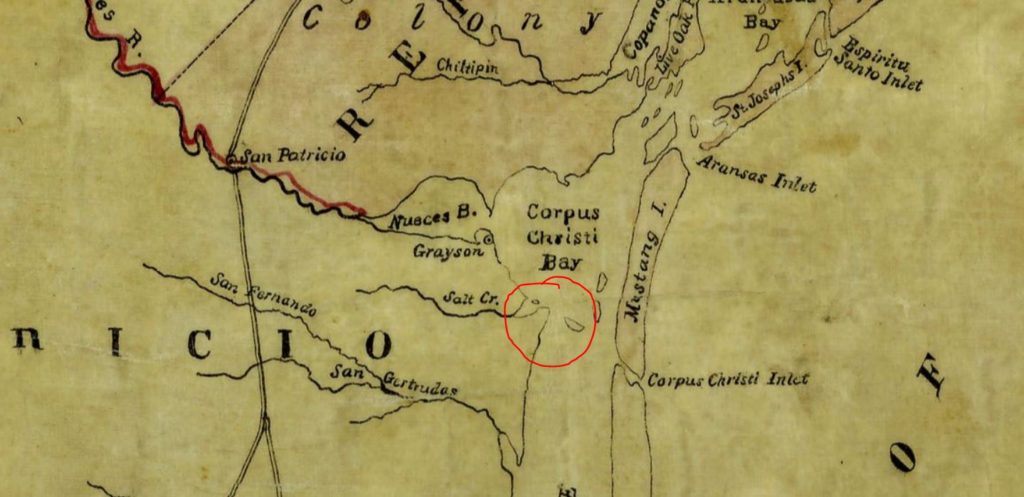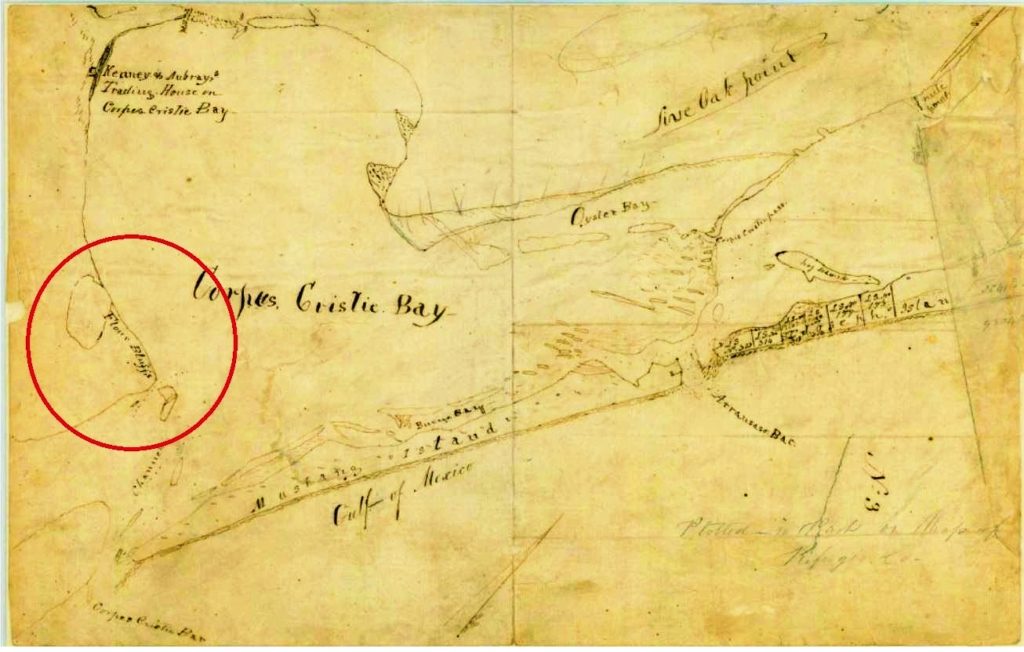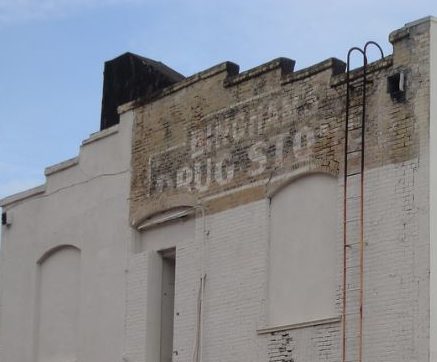[spacer height=”20px”]
As I dig through old records, faded news clippings, yearbooks, scrapbooks, and assorted secondary sources in search of any Flour Bluff history I can find, I sometimes stumble across odds and ends that evoke laughter, gasp, or shake my head. I thought I’d share some of these little gems with all of you who love Flour Bluff.
[spacer height=”20px”]
- John V. Singer, brother to Isaac Merrit Singer who developed the sewing machine by the same name, lived with his wife and seven Texas-born children on Padre Island. He arrived in 1847, bought the old Santa Cruz Ranch from the Padre Jose’ Nicolas Balli’ estate. When the Civil War broke out in 1865, the Singers were ordered to leave the island because of their Union sympathies. They buried their collected treasure and lived for a time in Flour Bluff. They did not, however, stay long enough to be considered the first true settlers of Flour Bluff. That honor seems to go to the Hugo Ritter family arriving in 1890 and starting the first school in 1892. (That makes Flour Bluff School 125 years old!)
- On Wednesday, April 27, 1864, the Quad-City Times, a newspaper in Davenport, Iowa, ran a story by a man who, under the command of Captains Gray and Doolittle of the 20th Union Regiment, had landed on “Flour Bluffs, a point on the western side of the bay, and 12 miles distant from the town of Corpus Christi. He describes what he saw on the night march: “For the first three or four miles our road took us over succession of sand hills which were unrelieved by any green thing, except an occasional clump of cactus. Leaving this barren waste, we crossed a tract of land still sandy, but covered with dwarf oaks that never grow more than three feet high, are very thick and difficult to walk through.” (This sounds just like the brush I played in as a child!)
- On Sunday, July 23, 1882, The Galveston Daily News ran a piece on the Kenedy Pasture. The reporter wrote of how he saw six schooners off Flour Bluff Point loaded with fence posts for the ranch and described the Laguna Madre on that day: “On the morning of the 5th, we hoisted sail and for three days we did not make more than three miles. There was only about eighteen inches of water on the flats for a distance of six miles.” He went on to report what it was like to wade through the shallow waters: “These flats, from Flour Bluff south for about sixteen miles, are covered with a thick coat of grass that grows under the water. In many places it is ten to fifteen inches long and feels under foot as soft as velvet. This grass, when torn out by the boats dragging over it, will sink to the bottom and there remain until it dies; then it will rise and float on the water until carried ashore, where it emits a very disagreeable odor–fully as offensive as that that arises from a slaughter-pen. It is not considered unhealthy by the citizens along the coast. These grass flats are a great feeding place for fish.” (Ah, the smell you’ll never forget!)
Laguna Madre (Photo by SevenTwelve Photography)
[spacer height=”20px”]
- On Monday, March 19, 1894, The Brownsville Herald, reported that Sea Island cotton could be ginned by the ordinary cotton gin, and that Mr. H. H. Page planted only a small patch of it at Flour Bluff as an experiment. It yielded well, producing about 500 pounds from his crop. (I have tried to grow a great many things in this Flour Bluff sand, but never did I ever consider growing cotton!)
- On Thursday, June 27, 1895, The Galveston Daily News reported that 129 scholars attended the Flour Bluff and Laureles schools. (Today, Flour Bluff ISD has over 5300 students!)
[spacer height=”20px”]

[spacer height=”20px”]
- Evidently the Flour Bluff residents were very patriotic in 1896 and loved a good celebration, one that could have included the Ritter, Johnson, Roscher, Jeletich, Self, Graham, Roper, Stevens, and Watson families, if indeed they had settled in the area by then. According to The Galveston Daily News, “The residents of the Flour Bluff neighborhood are making arrangements for a big barbecue to be given on the Fourth of July,” (I wouldn’t mind seeing this happen again, perhaps at Parker Memorial Park where Flour Fest was held last weekend!)
- On July 4, 1896, The Galveston Daily News ran an article out of Corpus Christi about “the immense vineyard at Flour Bluff.” The Laguna Madre Horticultural Association “has attached widespread attention in this section, owing to its immense yield of grapes, and additional large sums of money would willingly be invested in the grape industry in that section if a more convenient means were afforded of getting the produce to market.” This “more convenient means” meant the building of a road from Aberdeen to Flour Bluff “a distance of about ten miles, at a cost of $15,000.” (Gee, if we could only build a road in Flour Bluff for that price today!)
- In a January 15, 1899, a Houston Post correspondent learned “from a resident of the Flour Bluff neighborhood that a drove of about twenty wild javelinas attacked the house of Mr. C. L. Barnes of that neighborhood a couple of days since. Mr. Barnes was absent from home at the time and the family seeing the brutes entering the yard, closed the house none too soon. The watch dog, which was tied to a tree outside, was vanquished by the javelinas and badly ‘knocked out.’ The animals remained on the premises about an hour, when they disappeared in the chaparral and no trace has since been seen of them.” (I saw their cousins just last week on my walk to the Oso by the water tower!)
- In 1903, The Brownsville Herald reported on a pineapple farm in Flour Bluff owned by George G. Clough, an experiment that “should prove the success confidently anticipated.” The Herald also reported on a suit brought against the federal government by a Mrs. Shaw for “damages for property taken by the federal troops during the Civil War, about forty years ago; the troops, it is claimed, taking down and carrying away to Flour Bluff a five-room house on the beach belonging to Mrs. Shaw.” (Trying to grow something in this sand and the first of many battles between Flour Bluff residents and the government over personal property? It sounds as if not much has changed.)
[spacer height=”20px”]

Photo courtesy of Carnivoraforum.com
[spacer height=”20px”]
- On Friday, July 10, 1908, The Houston Post reported on yet another javelina attack in Flour Bluff. It seems that John Finnegan, M. M. Dodson, and a party of eight friends “were hunting in a thicket near the mud bridge in the vicinity of Flour Bluff.” They evidently came upon “a veritable nest containing about 500 javelinas (wild hogs) which took after them. All the hunters emptied both barrels of their guns into the bunch of javelinas, which seemed to come from every direction, and killed about fifteen of the animals, and they made for the hunters, who fled to the nearest trees.” Then, as the story was told, Mr. Finnegan crawled up a mesquite tree, dragging his gun after him. The weapon was discharged, “tearing the thumb and part of the wrist of his left hand almost off, while twenty-eight of the shot lodged in the left side of his face.” They had encountered and killed a Mexican lion the morning before. The reporter ended the story with “It seems that wild game is plentiful in the vicinity of Flour Bluff.” (We still see all kinds of wildlife on the Encinal Peninsula. The coyotes have really been singing lately!)
- The San Antonio Gazette ran an ad on October 17, 1908, for “The Real Estate Man” (aka Frank Allen) who was selling 20 to 40-acre tracts of land “down at Flour Bluff” stating “It is the most suitable and advantageously located land in the United States for the culture of citrus fruits and it is the earth for oranges, lemons, onion, cabbage, potatoes, cucumbers, beans, melons, and other vegetables. Fine fishing and hunting and an ideal place for a home.” (Flour Bluff is still an ideal place for a home.)
- To end this little post on Halloween night, I’ll leave you with a rather gruesome story printed in The Houston Post on February 12, 1909. “While walking along the beach near Flour Bluff, on the southern shores of Corpus Christi Bay last Sunday, O. K. Haas, a well-known farmer, saw something peculiar protruding from the ground near the water’s edge, and on investigation found it was the head of a human skeleton. He attempted to pick the head up, and in doing so discovered that the entire skeleton was there. The head part was solid, with the exception of a crack in the skull; the lower part of the face was covered with barnacles and the teeth were as good as though the man had died the day before. The entire skeleton was in a fine state of preservation. The head and some of the bones were brought to this city and are now on exhibition at the Bingham drug store. Some believe that the skeleton is that of a man who was killed many years ago on the bay shore (judging from the cracked skull) and has been where it fell all these years. Others believe the man died on the beach. When found, the left hand was grown to the breast bone.”



